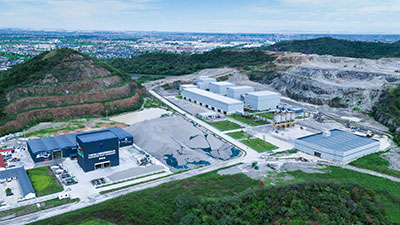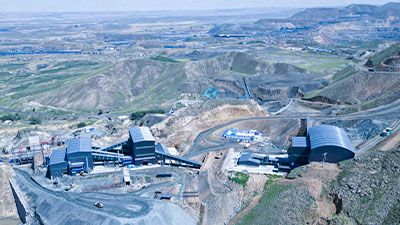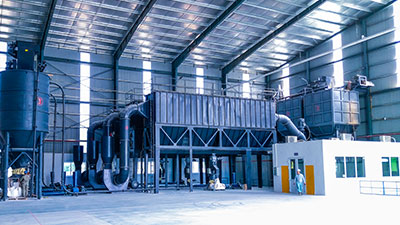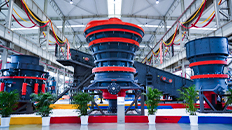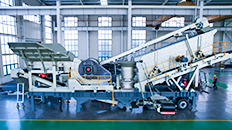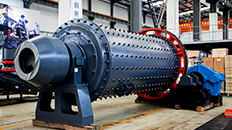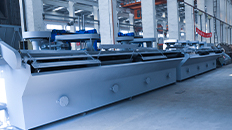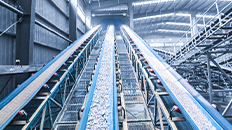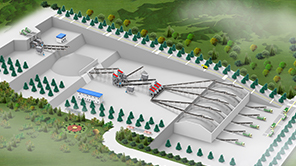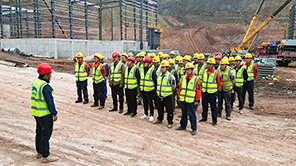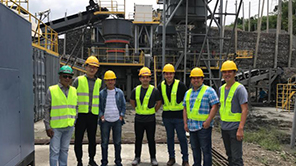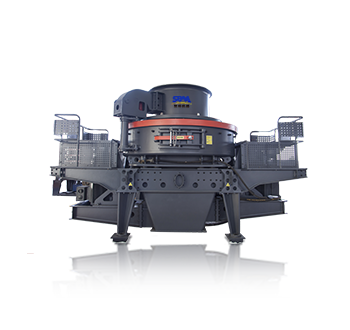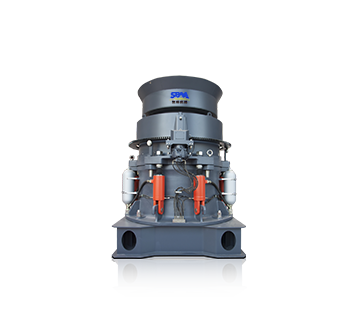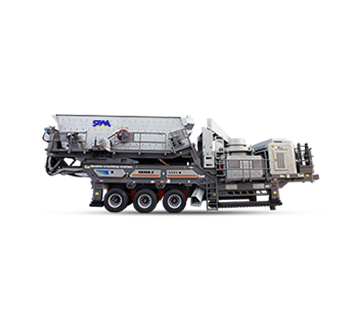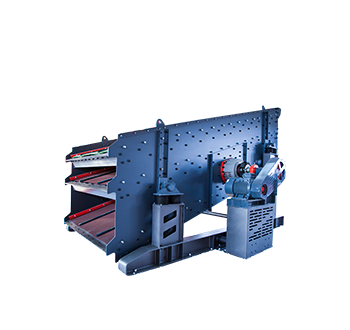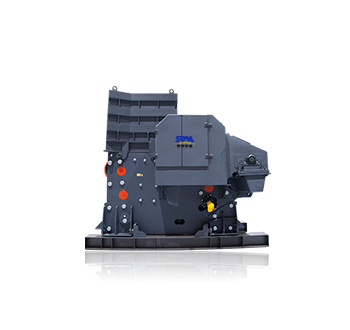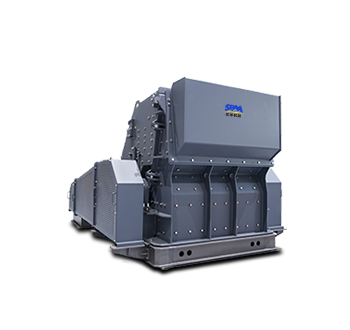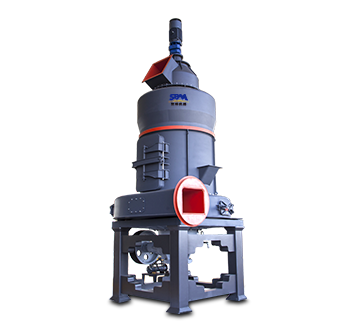Summary:Basalt is the best material in the stone used in the repair of roads, railways, and airport runways. It has the advantages of wear resistance, low water draft
Basalt is the best material in the stone used in the repair of roads, railways, and airport runways. It has the advantages of wear resistance, low water draft, poor electrical conductivity, strong compression resistance, low crushing value, strong corrosion resistance, and asphalt adhesion and is recognized internationally as the best cornerstone for the development of railway transportation and road transportation.
When it comes to the crushing and sand making of hard rocks such as basalt and granite, many people are worried about the spare parts are severely worn and the replacement frequency is high, or the output does not meet the design requirements, the efficiency is low, or the finished sand grain type is not good. Indeed, making sand from hard rocks such as basalt is really difficult!

Difficulties of basalt crushing and processing
1. Basalt has high compressive strength, good rock toughness, high hardness, strong abrasiveness, and great difficulty in crushing, which makes it difficult for the actual processing capacity of the crushing equipment to reach the theoretical output capacity.
2. After crushing process of basalt, the final products has poor grain shape and it is difficult to control the needle and flake content of finished coarse aggregate within the specification requirements.
3. After sand making process of basalt by vertical shaft impact crusher, the content of stone chips and coarse particles in the aggregate smaller than 5mm is relatively high, but the fine particles are relatively small, the fineness modulus of the sand is relatively large, and the content of stone powder is relatively low. If customers adopt rod mill to process basalt for sand making, the output of a single device is low, and the water consumption, steel consumption, and power consumption are all high, making it difficult to make sand.
Technological countermeasures of basalt crushing processing
During the preparation period of a hydropower station, the sand and gravel processing system encountered the above problems. The raw material lithology is dense massive basalt and almond basalt, and its dry compressive strength is 139.3-185.7MPa and 163.3-172.9MPa, respectively. The total amount of concrete to be processed by the system is about 1.2 million m³, and the production capacity of the system is 154,000 T/month. Among them, the processing capacity of raw material is 560t/h, the production capacity of finished aggregate is 396t/h, and the production capacity of finished sand is 140t/h.
1. Equipment selection
In view of the characteristics of basalt, it was decided to adopt the process of "four-stage crushing, vertical shaft impact crusher and rod mill combined sand making (commonly used sand making process)". The main workshop layouts are: coarse crushing workshop, medium crushing workshop, screening workshop, sand making workshops, inspection and screening workshops, coarse and fine aggregate storage yards, etc. and the load rate should be low during equipment selection, and the equipment output should be sufficient.
2. Grain shape control of finished aggregate
In view of the difficulties of poor grain quality and large content of small and medium needle-like particles in finished aggregate after basalt processing, the quality of finished coarse aggregate can be controlled mainly through the following measures:
On the one hand: control the crushing ratio of medium and fine crushing, continuous feeding, realize fully feeding, lamination crushing and other measures to control the grain quality.
On the other hand: In view of the characteristics of high content of needle-like particles after basalt crushing, shaping machine is adopted. The first screening workshop after medium fine crushing does not produce small size finished particles, but only large size and medium size finished particles. Aggregate are fed into the ultra-fine crushing workshop (the workshop has 3 sets of vertical shaft impact crusher with shaping effect), after shaping in the second screening workshop, small size particles and particles smaller than 5mm are produced.
3, Control of sand formation rate, fineness modulus and stone powder content
In view of the characteristics of low sand formation rate, high fineness modulus of finished sand and low stone powder content of basalt sand, the following corresponding measures are mainly adopted:
First of all, improve the rotor speed of the vertical shaft impact crusher, improve the linear velocity of aggregate in the crushing cavity, improve the sand formation rate, and the stone powder content of the produced sand, and reduce the fineness modulus of the sand at the same time;
Secondly, adjust the feeding grade of vertical shaft impact crusher, which can improve the sand making effect very well;
Thirdly, the content of stone chips in < 5mm aggregate produced by the system after coarse crushing and medium &fine crushing is high. The process makes this part of aggregate not to be finished products, so that all < 5mm aggregate after medium and fine crushing are fed into the vertical shaft impact crusher for shaping, in order to control the quality of finished sand;
Fourthly, the vertical shaft impact crusher process the aggregates from the second screening workshop, and the <5mm part of the particles enter the rod mill for re-crushing, to adjust the fineness modulus of the finished material and the stone powder content;
Fifthly, when the vertical shaft impact crusher is used to produce artificial sand, the lower the water content of the processed aggregate, the better the sand making effect is. According to this characteristic, the whole dry method is adopted in the system to improve the sand making effect of the sand making machine.
4, Stone powder content of finished sand
The system produces sand for normal concrete and sand for RCC. The biggest difference between the two types of sand is the different content of stone powder, which is 6-18% in the former and 12-18% in the latter. In the process, the following measures are mainly adopted to control the quality of the two finished sand:
Firstly, no finished products are produced after medium and fine crushing, all of the crushed materials are processed by vertical shaft impact crusher after second screening classification, and the 3-5mm aggregate is removed and sent to rod mill for crushing again. The process adopts the all-dry production method. In order to ensure the content of stone powder and fineness modulus of normal concrete sand, the vertical shaft impact crusher and drying method is adopted.
Secondly, vertical shaft impact crusher and rod mill are used to make sand for RCC. Meanwhile, the stone powder is recovered from the fine sand lost by the sand washing machine. All the stone powder recovered by the recovery device is mixed into the sand for RCC to improve its stone powder content.

